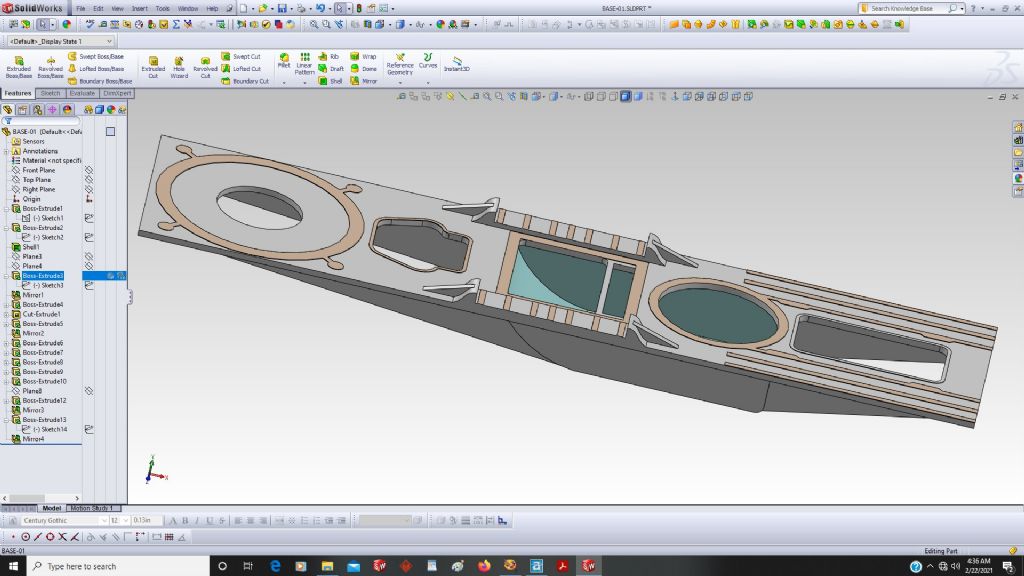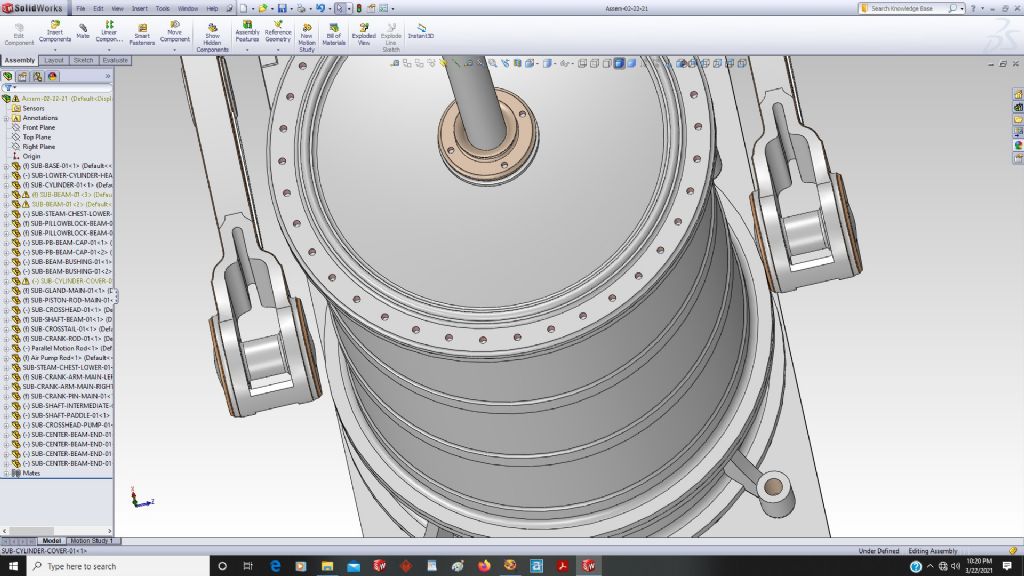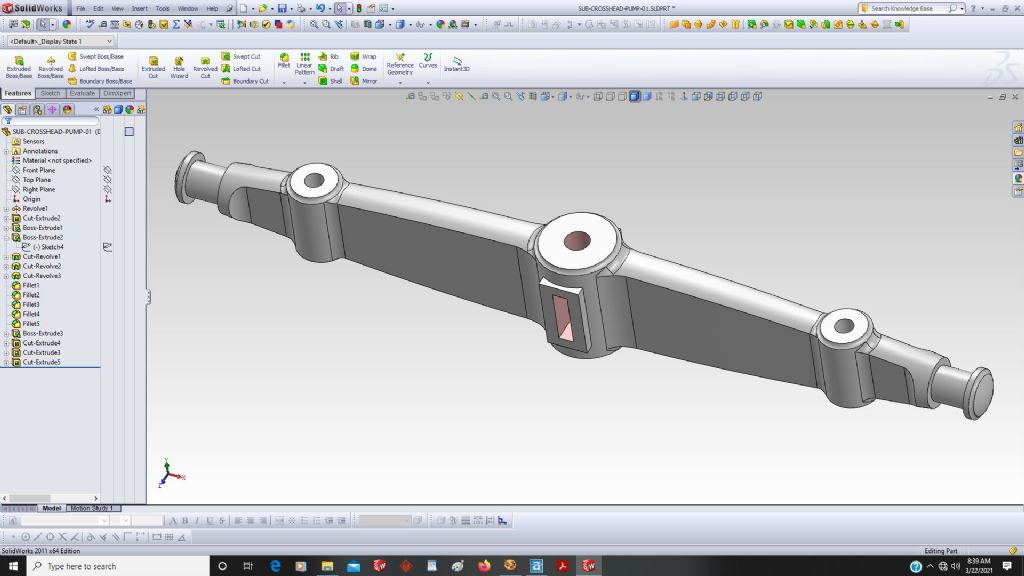An interesting backstory on this engine design is that it was designed by Charles Copeland, who was either a contractor, or worked for the US Navy.
In looking at the Mississippi drawings, I noticed an incredible gaffe, which was that the crank arms were drawn both facing the same direction. No competent engineering designer would ever make such an obvious blunder.
So I assumed that this must be Copeland's first attempt at a steam engine for a Naval vessel (I think this was the first steam powered Naval vessel design for the US), and I assumed (falsely) that this would also be Copeland's last engine design, since he clearly did not know what he was doing with the Mississippi design.
I found other errors in the Copeland drawings, and in general, they are good examples of very poor drafting and engineering design.
Further research indicated that Copeland went on to design other ship engines, apparently very successfully, and sophisticated designs, and so I guess it was a learning process for him.
And as a comparison, I found a set of French side-level engine drawings, also created in 1840, and the French drawings indicate a very refined and complete design, with exceptionally clear and concise drawings.
The Mississippi engines are so close the French design that I have to suspect that Copeland researched other engine designs, and basically copied them to the best of his ability (which was very poor ability).
I tend to forget how primitive engineering design and manufacturing was in the US in 1840.
England was king of the world as far as industrial design in the 1800's, although the French design from 1840 is very respectable. Charles Porter mentions in his book "Engineering Reminisces" that the only way to make a decent steam engine in the US was to order all of the tooling and measuring instruments from England.
To this day I still find and buy some superb products from England, such as a large paper cutter I bought recently.
Manufacturing seems to have vacated the US these days, but that is another story that we won't get into.
I am not up on architectural terms, but gothic seems to describe the Mississippi engine design well.
It is amazing how much effort went into the cosmetics of these old engines.
Later engine designs are devoid of these striking and remarkable visual features, and one has to lament that something has been lost over time.
.
Edited By PatJ on 03/05/2022 22:43:04
Tim Stevens.




































